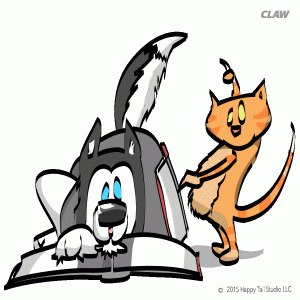Cats’ Bookshelf: Cat Sense
John Bradshaw’s Cat Sense takes a fresh look at cats, using a comprehensive analysis of history, biology, direct experience, and related research to catch a glimpse into the sometimes hidden (and sometimes ignored) social and physical realities of cat lives. Written by anthrozoologist John Bradshaw, who has studied cats for more than 30 years, Cat Sense challenges prevailing myths and assumptions and equips cat-enthusiasts with the tools needed to assess and improve life for our feline cohabitants.
Roughly more than 50 million U.S. households have at least one dog compared to 42 million cats. So perhaps it’s unsurprising to learn that cats’ are less frequently studied, and therefore more often misunderstood. Cat Sense points a critical eye on the peculiar accommodations that have become common for cats in modern life and offers insightful perspectives for cat lovers. Above all, Cat Sense urges careful rethinking of assumptions about what cats need and want, as well as what folks should expect them to accommodate and provides plenty of ideas about how to improve the lives of your cats.
The in-depth examination of the origin of the domesticated cat is as interesting as it is thorough, offering a taste into the archaeological data related to the evolution of the domestic cat. The strengths of these insights inform readers the of innate cat needs and drives. Bradshaw describes with detail what kinds of environments will enhance cat happiness, and demonstrates careful attention to details of cat body language, play behavior, and socialization. These features render the book a standout for anyone seeking to build a better cat-house.
One of Cat Sense’s weaker arguments hinges around the assumption of an insecure future for domestic cats. In short, Bradshaw makes some controversial claims about neutering and spaying. Speculating on an imagined long-view, where the friendliest cats have been neutered or spayed before they breed, Bradshaw seems to make a case for encouraging limited breeding to facilitate domesticity. Currently, more than one million healthy adoptable cats are euthanized annually in the U.S., so there is no under-availability of cats. Despite the current reality, many of us do have perfect cats we wish we could breed or keep forever (one comes to mind immediately, in fact). Responding to the reality of abundant overpopulation, most shelters advocate for aggressive spay and neuter policies for adopted cats and TNR programs for feral cats. It’s difficult to imagine a cat shortage looming in the future, and being so out of sync with current realities makes this particular argument untenable, at least to this reader.
Overall Brasdhaw offers a thoughtful examination of the many things that makes cats unique, special, and dear to humans, and more importantly, how humans can better return the favor of feline companionship. Cat Sense is one of a kind contribution, well placed on any cat lover’s bookshelves, even if it raises some issues that may not make the reader purr.[/vc_column_text][/vc_column][/vc_row][vc_row][vc_column width=”1/1″][vc_column_text] [/vc_column_text][/vc_column][/vc_row]
[/vc_column_text][/vc_column][/vc_row]

